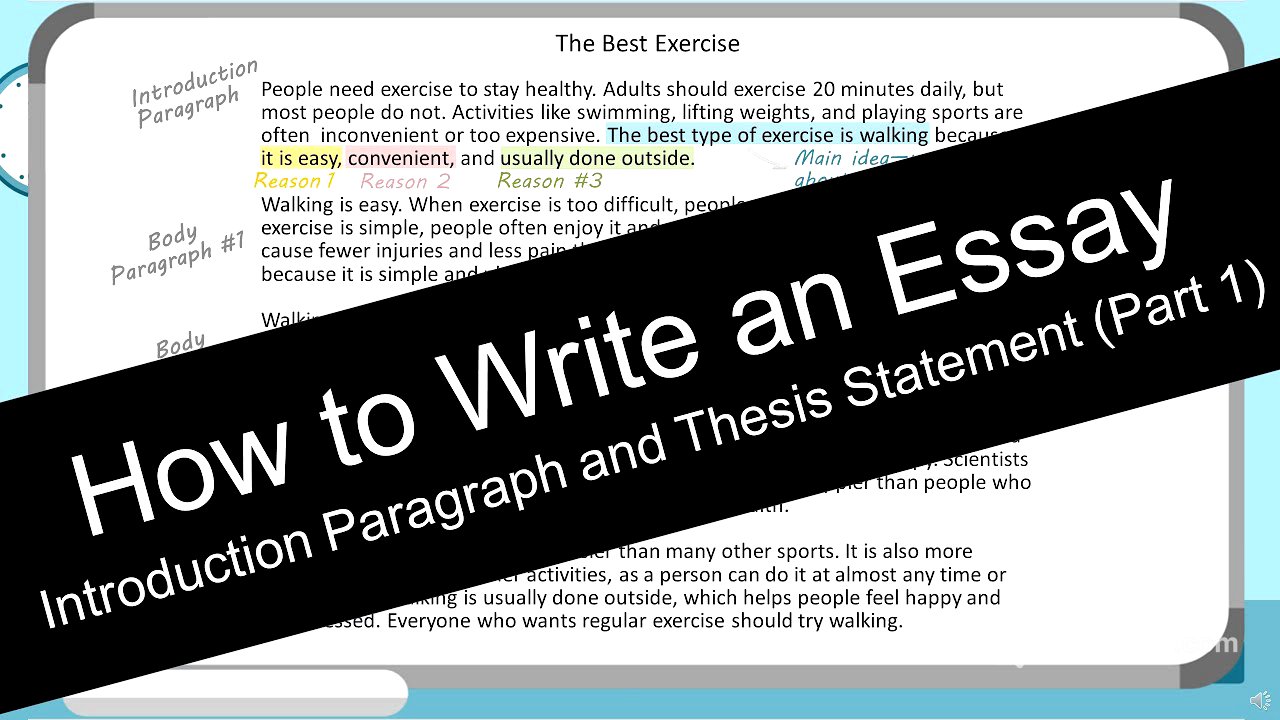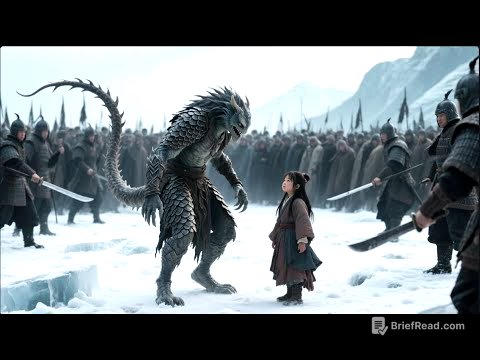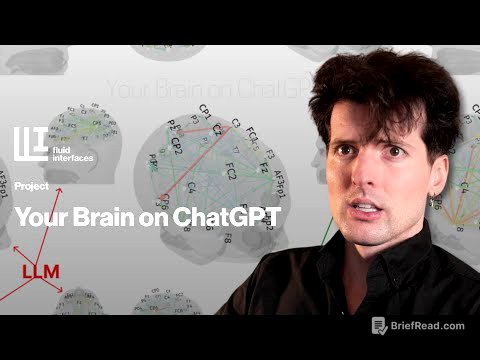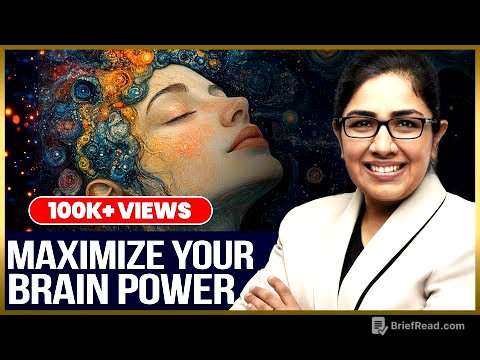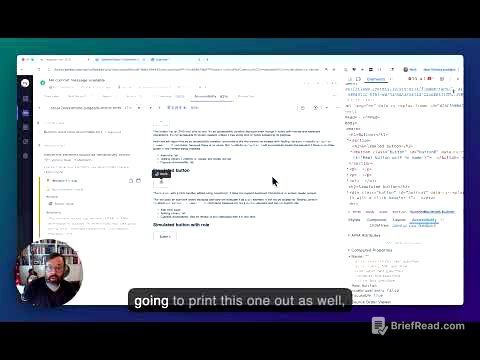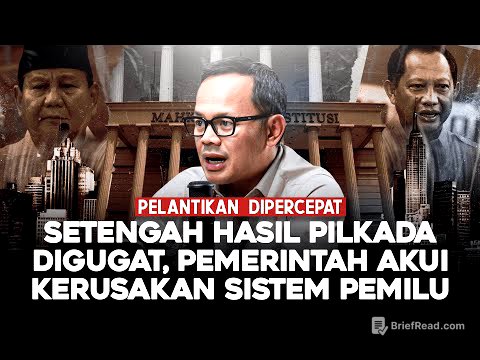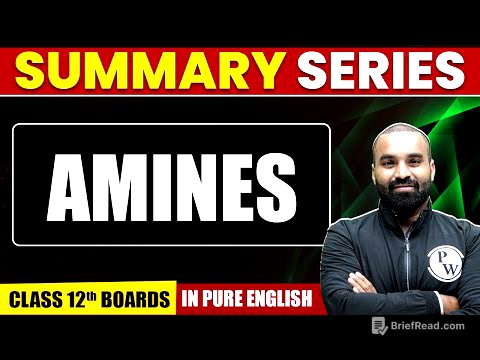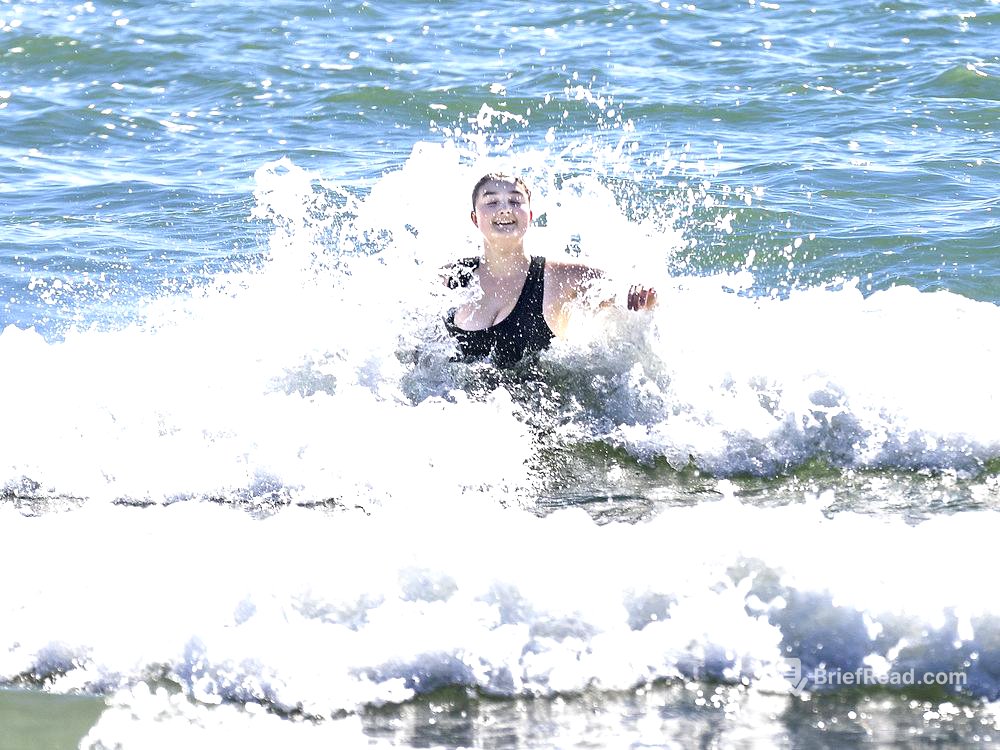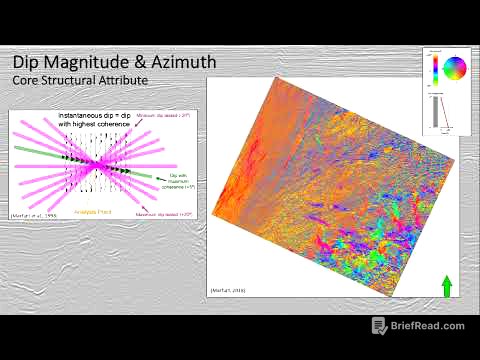TLDR;
This video provides a step-by-step guide on writing an effective essay, focusing specifically on crafting a strong introduction paragraph. It explains the key components of an essay, including the hook, background information, and thesis statement. The video offers various examples and tips to help viewers understand and apply these concepts to their own writing.
- An essay consists of 3-5 paragraphs that explain an idea in response to a prompt.
- The introduction paragraph includes a hook, background information, and a thesis statement.
- The thesis statement is the most important sentence, containing the main idea and three supporting reasons or examples.
How to write an essay [0:00]
The video is the first part of a four-part series on how to write an essay. It focuses on writing the introduction paragraph, which includes the hook, background information, and thesis statement. An essay is defined as a group of paragraphs that explain an idea, typically consisting of three to five paragraphs. Before writing an essay, there is usually a prompt, which is a question or statement that the essay answers.
Example of an essay [0:41]
The video provides an example essay written in response to the prompt: "What is the best exercise? Write an essay that explains your answer." The example essay is titled "The Best Exercise" and consists of five paragraphs. The video highlights the structure and components of a well-written essay.
Parts of an essay [0:56]
The first paragraph of an essay is the introduction, paragraphs two, three, and four are the body paragraphs, and paragraph five is the conclusion. When writing an essay, it's important to clearly show where each paragraph begins, either by using an empty line after each paragraph or by indenting the first word of each paragraph. The video emphasizes the importance of following the format required by the teacher.
The first sentence (called the "hook" or "lead") [2:10]
The first part of the introduction paragraph is called the hook, which is an interesting sentence about the topic and serves as the first sentence in the essay. The topic is the thing or person you're writing about. The first sentence of an essay is called "the hook" because it catches the readers' attention and makes them want to read more of your essay.
Essay hook types and examples [2:28]
There are many types of hooks, but the video focuses on five easy-to-write types, providing an example of each. The first type is a surprising fact or statistic about the topic, such as "According to the World Health Organization, one in four adults do not get enough exercise." Another type is an interesting question, like "Does exercise only improve health if it's difficult?" A wise quote can also serve as a hook, for example, "Reading is to the mind what exercise is to the body, according to Joseph Addison." A contradiction can also be used: "People think strenuous exercise is better for them than easy exercise, but almost no one does a strenuous routine twice." Finally, a sentence that tells why the topic is important can be used, such as "People need exercise to stay healthy."
When using specific information like numbers and facts, it's important to cite the source. The video avoids citations and bibliographies to keep things simple, opting for the last type of hook in the example essay. When writing this type of hook, avoid using the word "important" to keep the sentence from sounding too simple. Examples include: "Vegetables have vitamins that cannot be found in other foods," "A driving license gives a person independence," "The human brain controls everything we do and say," and "Romeo is one of Shakespeare's most famous characters."
Background information [5:54]
After the hook, the introduction paragraph includes sentences that provide background information on the topic. Examples of background information include facts, numbers, group opinions, or history. The type of background information used should prepare the readers for the message about the topic.
Background information types and examples [6:10]
Several types of background information can be included in an essay after the hook. These include a surprising statistic or fact about the topic, such as "A vigorous 30-minute walk raises your heart rate and burns over 100 calories." A definition of a word that readers might not know can also be used, for example, "Vigorous exercise is physical activity that raises the heart rate and speeds up breathing." Positive or negative opinions that people have about the topic can also be included, such as "Many people view walking as too easy to improve health or help weight loss." Giving a little history about the topic is another helpful type of background information, for example, "Historically, people walked as a form of transportation. By 1900, walking was an Olympic event." Finally, trends or recent changes that pertain to the topic can be given, like "By the 1990s, walking was a popular US sport with over 65 million regular walkers." It's important to pick only about three or four sentences that are closely related to what you're going to say about your topic in your essay.
Thesis statement [8:18]
After the hook and background information, the next sentence to write is the thesis statement, which is the most important sentence in the essay and the last sentence in the introduction paragraph. The thesis statement contains the main idea about the topic, plus three reasons, steps, types, parts, or examples, depending on the topic and main idea. The thesis statement answers the prompt in one sentence and includes three reasons.
Thesis statement examples [10:21]
The video provides several examples of thesis statements about different topics. For the prompt "What is one thing everyone should do?", a thesis statement could be "Everyone should eat lots of vegetables for vitamins, minerals, and fiber." The main idea is that everyone should eat lots of vegetables, and the three reasons are for the vitamins, minerals, and fiber. For the prompt "Explain how to get a driver's license," a thesis statement could be "Getting a driver's license requires a few steps including to learn rules, practice driving, and pass exams." The main idea is that getting a driver's license requires a few steps, and the three steps are to learn the rules, practice driving, and pass exams. For the prompt "Describe the parts of the human brain," a thesis statement could be "The human brain has three main parts, including the cerebrum, cerebellum, and brain stem." The main idea is that the human brain has three main parts, and the parts are the cerebrum, cerebellum, and brain stem. Finally, for the prompt "Analyze the character Romeo and explain what motivates him," a thesis statement could be "The character Romeo is driven by devotion to his family, friends, and Juliet." The main idea is that the character Romeo is driven by devotion, and the examples are devotion to family, friends, and Juliet.
The video concludes by reviewing all parts of an introduction paragraph, including the hook, background information, and thesis statement, using the example essay. The hook is "People need exercise to stay healthy," the background information is "Adults should exercise 20 minutes daily, but most people do not. Activities like swimming, lifting weights, and playing sports are often inconvenient or too expensive," and the thesis statement is "The best type of exercise is walking because it is easy, convenient, and usually done outside." The main idea is that the best type of exercise is walking, and the three reasons are because it is easy, convenient, and usually done outside.
